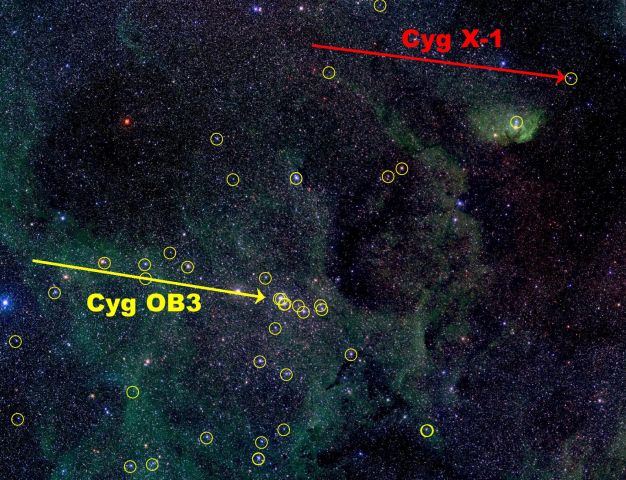Cyg X-1: Can Black Holes Form in the Dark

Explanation:
The formation of a
black hole from the collapsing
core of a massive star is thought to be heralded by a spectacular
supernova explosion.
Such an extremely energetic collapse is also a
leading explanation
for the mysterious cosmic
gamma-ray bursts.
But researchers now suggest that the Milky Way's most
famous black hole,
Cygnus X-1, was born when a massive
star collapsed --
without
any supernova explosion at all.
Their dynamical evidence is summarized in this
color image of a gorgeous
region in Cygnus,
showing Cyg X-1 and a cluster of massive stars
(yellow circles) known as Cygnus OB3.
Arrows compare the measured direction and speed of Cyg X-1
and the average direction and speed of the massive stars
of Cyg OB3.
The similar motions indicate that
Cyg X-1's progenitor star was itself a cluster member
and that its path was not altered at all when it
became a black hole.
In contrast, if Cyg X-1 were born in a violent supernova
it would have likely received a
fierce
kick, changing its course.
If not a supernova, could
the formation
of the Cyg X-1 black
hole have produced a
dark
gamma-ray burst in
the
Milky Way?
Authors & editors:
Robert Nemiroff
(MTU) &
Jerry Bonnell
(USRA)
NASA Web Site Statements, Warnings,
and Disclaimers
NASA Official: Jay Norris.
Specific
rights apply.
A service of:
LHEA at
NASA /
GSFC
& Michigan Tech. U.

